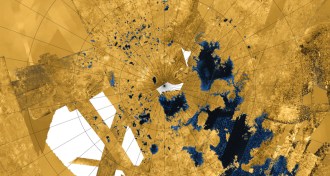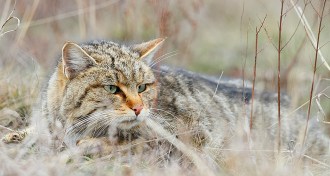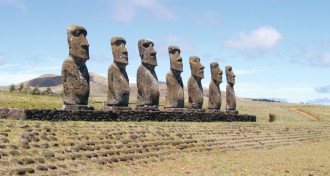Uncategorized
-
 Particle Physics
Particle PhysicsElectrons’ roundness frustrates researchers
Experiment finds no signs of asymmetry, which would point to undiscovered particles.
By Andrew Grant -
 Neuroscience
NeuroscienceNarcolepsy may be an autoimmune disease
Narcolepsy occurs when wayward immune forces launch an attack on brain cells responsible for wakefulness, a new study suggests.
By Nathan Seppa -

-
 Life
LifeNeandertal genes point to interbreeding, inbreeding
DNA from 50,000 years ago underscores modest levels of mating across hominid populations.
By Bruce Bower -
 Microbes
MicrobesA newfound respect for the microbial world
Despite what many people think about humans’ place in the scheme of things, scientists are finding more evidence that we live in a world of microbes.
By Eva Emerson -

-
 Planetary Science
Planetary ScienceSinkholes, tectonics may have shaped Titan’s lakes and seas
A map of Saturn’s largest moon reveals clues about the object's landscape.
By Meghan Rosen -

-
 Animals
AnimalsChina trumps Near East for signs of most ancient farm cats
Earliest evidence found for grain as a force in feline domestication.
By Susan Milius -
 Chemistry
ChemistryAncient bond holds life together, literally
The chemical link between sulfur and nitrogen in animal tissues and organs may have sparked the assembly of single cells into complex animals.
By Beth Mole -
 Health & Medicine
Health & MedicineDog dust may benefit infant immune systems
Microbes from pet-owning houses protected mice against allergy, infection.
By Nathan Seppa -
 Archaeology
ArchaeologyEaster Island’s farmers cultivated social resilience, not collapse
A Polynesian society often presumed to have self-destructed shows signs of having carried on instead.
By Bruce Bower